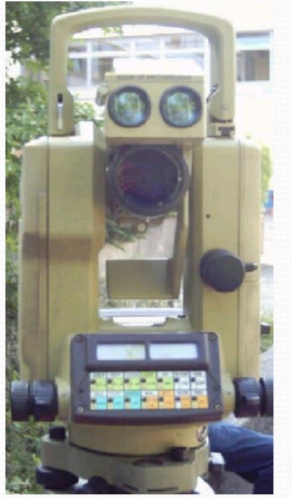What is Meridian and Bearing ?
Meridian:Some reference direction based on which direction of line is measured
True meridian ( Constant)
Magnetic meridian ( Changing)
Arbitrary meridian
Bearing:
Horizontal angle between the meridian and one of the extremities of line
True bearing
Magnetic bearing
Arbitrary bearing
True meridian
Line passing through geographic north and south pole and observer’s position
Position is fixed
Established by astronomical observations
Used for large extent and accurate survey (land boundary)
Magnetic meridian
Line passing through the direction shown by freely suspended magnetic needle
Affected by many things i.e. magnetic substances
Position varies with time (why? not found yet)
Assumed (Arbitrary) meridian
Line passing through the direction towards some permanent point of reference
Used for survey of limited extent
Disadvantage
Meridian can’t be re-established if points lost.
True bearing:
The angle made by a survey line with reference to true
meridian is called true bearing. It is always remains constant.
Magnetic bearing:
The angle made by a survey line with reference to
magnetic meridian is called magnetic bearing. It changes from place to
place and time.
Arbitrary bearing:
The angle made by a survey line with reference
to arbitrary meridian is called arbitrary bearing.
Representation of Bearing
Bearings are expressed in the following two systems.1) Quadrantal (Reduced) bearings system.
2) Whole circle bearings system.
Reduced bearing:
In this system bearings of lines are measured with reference to north or south which ever is closer to given survey line
Here the measurement of angles can be done both in clockwise or anticlockwise direction
When the whole circle bearing is converted to quadrantal bearing then it is called as reduced bearing
Thus reduced bearing is similar to quadrantal bearing
Here the values lies between 0 to 90 degree's.
The system of measuring this bearing is known as Reduced Bearing System (RB System).
Here the measurement of angles can be done both in clockwise or anticlockwise direction
When the whole circle bearing is converted to quadrantal bearing then it is called as reduced bearing
Thus reduced bearing is similar to quadrantal bearing
Here the values lies between 0 to 90 degree's.
The system of measuring this bearing is known as Reduced Bearing System (RB System).
Whole circle bearing (Azimuth):
The bearing of a line measured with reference to magnetic meridian in clockwise directions here the angles lies between 0 to 360 degree's.
The quadrantal starts from north and progress in clockwise direction
First quadrant is lies between 0 to 90 degree's.
Second quadrant is lies between 90 to 180 degree's.
Third quadrant is lies between 180 to 270 degree's.
Fourth quadrant is lies between 270 to 360 degree's.
The quadrantal starts from north and progress in clockwise direction
First quadrant is lies between 0 to 90 degree's.
Second quadrant is lies between 90 to 180 degree's.
Third quadrant is lies between 180 to 270 degree's.
Fourth quadrant is lies between 270 to 360 degree's.
The system of measuring this bearing is known as Whole Circle Bearing System (WCB System)
MEASUREMENTS OF BEARINGS:
Conversion of Whole Circle bearings into Quadrantal Bearings
Fore bearing and back bearing:
FORE BEARING (F.B)
The bearing of a line measured in forward direction of a survey line is called fore bearing (F.B).F.B = BACK BEARING +-1800
BACK BEARING (B.B)
The bearing of a line measured in direction opposite of a survey line is called back bearing (B.B)1. Convert the following whole circle bearings of lines to quadrental bearings.
a) OA 32
b) OB 109
c) OC 211
d) OD 303
Solution:
Refer to fig:
a) W.C.B of OA = 32 degrees
Quadrantal bearing = N 32 E
b) W.C.B of OB = 109
Quadrantal bearing = 180 – W.C.B
= 180-109 = S 710E
c) W.C.B of OC = 211
Quadrantal bearing = W.C.B – 180
= 211– 180= S 31 W
d) W.C.B of OD = 303
Quadrantal bearing = 3600– W.C.B
= 360– 303 = N 570 W
2) Convert following reduced bearings to the whole circle bearings:
(i)N 52o 30’E (ii)S 30o 15’E (iii)S 85o 45’W (iv)N 15o 10’W
Solution:
(i) R.B. = N 52o30’E & which is in the NE quadrant,
Therefore W.C.B =same as R.B = 52o30’
(ii)S 30o 15’E which is in the SE quadrant,
Therefore W.C.B =180o-30o15’ = 149o45’
(iii)S 85o45’W which is in the SW quadrant,
Therefore W.C.B =180o+85o45’ = 265o45’
(iv)N 15o10’W which is in the NW quadrant,
Therefore W.C.B =360o - 15o10’ = 344o50’
Quadrantal bearing = N 32 E
b) W.C.B of OB = 109
Quadrantal bearing = 180 – W.C.B
= 180-109 = S 710E
c) W.C.B of OC = 211
Quadrantal bearing = W.C.B – 180
= 211– 180= S 31 W
d) W.C.B of OD = 303
Quadrantal bearing = 3600– W.C.B
= 360– 303 = N 570 W
2) Convert following reduced bearings to the whole circle bearings:
(i)N 52o 30’E (ii)S 30o 15’E (iii)S 85o 45’W (iv)N 15o 10’W
Solution:
(i) R.B. = N 52o30’E & which is in the NE quadrant,
Therefore W.C.B =same as R.B = 52o30’
(ii)S 30o 15’E which is in the SE quadrant,
Therefore W.C.B =180o-30o15’ = 149o45’
(iii)S 85o45’W which is in the SW quadrant,
Therefore W.C.B =180o+85o45’ = 265o45’
(iv)N 15o10’W which is in the NW quadrant,
Therefore W.C.B =360o - 15o10’ = 344o50’














0 Comments